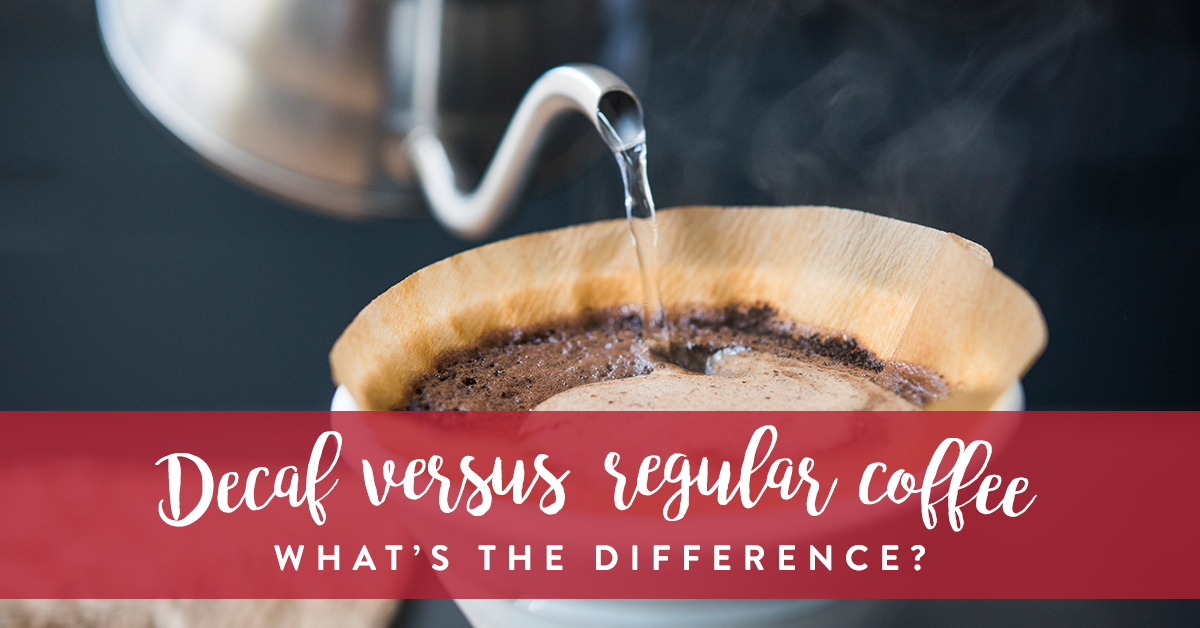
Decaf Versus Regular Coffee
Although the health benefits of moderate coffee consumption are generally understood, many people don’t get on with caffeine. Pregnant and breast-feeding women are advised to limit their intake, while many find that caffeine disrupts sleep, raises blood pressure, or makes them feel anxious.
However, for many years the poor reputation of decaf coffee (which was well deserved) meant it wasn’t a good option for those with a caffeine sensitivity. Freeze-dried instant decaf coffee was first manufactured in the 70’s and 80’s from low quality coffee which was a by-product of the fizzy drinks industry. They extracted the caffeine using harsh chemicals for inclusion in the fizzy drinks, then sold the remaining decaffeinated beans to coffee roasters for their use. It’s hardly surprising the resulting decaf coffee tasted appalling.
But now the reputation of decaf is on the rise. Chemical-free decaffeination methods protect the beans and high quality, single-origin, beans are being used to create great flavour. Coffee roasters have also mastered how to roast decaffeinated beans to maximise flavour.
How is decaffeinated coffee made?
A German, Ludwig Roselius, first discovered how to extract caffeine from coffee beans in 1903. He used benzene, a solvent now known to be a carcinogen, which probably helps explain decaf’s reputation for being loaded with chemicals. But benzene hasn’t been used for decades to decaffeinate coffee, and the process is now generally regarded to be safe.
There are four different methods used to extract caffeine from beans. Two “direct” methods employ chemical solvents – either ethyl acetate or methylene chloride. Green coffee beans are soaked in water to soften them, and then the solvent is added to draw the caffeine out. The water is then drained off, and the process repeated until the caffeine content of the beans is at or below 0.1 per cent, which is the legal maximum for decaffeinated coffee beans. This process also ensures that traces of solvent left on the beans are below the safe limits set by European legislation.
But some people still have concerns about drinking a coffee treated by chemicals, and many coffee experts believe the chemicals damage the beans and negatively impact the flavour of the coffee. Which is why methods that don’t involve chemical solvents are becoming increasingly popular.
The Swiss Water process is perhaps the best known. Green coffee beans are soaked in water, which dissolves the caffeine. Natural coffee components are then added to the water to make up for the flavour that leaches out of the beans along with the caffeine. The caffeine is then filtered out of the water and the process repeated until the beans are 99.9 per cent caffeine free. The other non-chemical process is Sparkling CO2. Green coffee beans are soaked in liquid CO2, the same gas as used in sparkling water, and under certain conditions the caffeine can be extracted and filtered out, leaving the flavour compounds unaltered.
Which decaf coffee is the best?
The quality of decaf has as much to do with the quality of the beans as the way the caffeine has been extracted. The decaffeination process has always been expensive and time-consuming, so some coffee manufacturers use the cheaper, inferior Robusta beans to keep prices low. Ironically, Robusta beans, commonly used in freeze-dried instant coffee and cheap blends, contain twice the caffeine of pricier Arabica beans and don’t taste as good.
At Spiller & Tait, like other speciality coffee producers, we use only top-quality Arabica beans for our decaf. Our beans come from Peru and they are decaffeinated using the Sparkling CO2 method. We roast our decaf beans slightly darker than our other coffees to create a body and depth of flavour which we believe makes it indistinguishable from caffeinated coffees.
Most of the larger coffee bean manufacturers still do use a chemical decaffeination process because it’s less time consuming and cheaper than the alternatives. So, if you want to find a good quality decaf coffee bean, or ground coffee, we recommend you look for a coffee that is explicit about the bean type, ideally Arabica, and the decaffeination process. You’ll rarely see this explained on the packaging of supermarket coffees, so we recommend the many craft roasters, like us, who describe both the process and the beans.
How much caffeine is in decaf coffee?
Under EU regulations, the caffeine content of decaf cannot exceed 0.3 per cent for freeze dried instant coffee, or 0.1 per cent for roast beans and ground coffee. This could mean as much as 5g of caffeine per cup of roasted beans, compared to 120g for normal caffeinated coffee. If you are hyper-sensitive to caffeine, then you'll still need to be careful not to consume too many cups of decaffeinated coffee as it is not completely caffeine free.
Delicious decaf that actually tastes of coffee and made without the use of solvents is now available. But, you will have to search for it and it’s likely you will pay a premium. The decaffeination process, combined with high quality beans, does increase the cost. But we certainly believe it’s worth it for those who want to enjoy a cup of coffee in the evenings and still get a good night’s sleep, or for those who need to reduce their caffeine intake for other health reasons.



